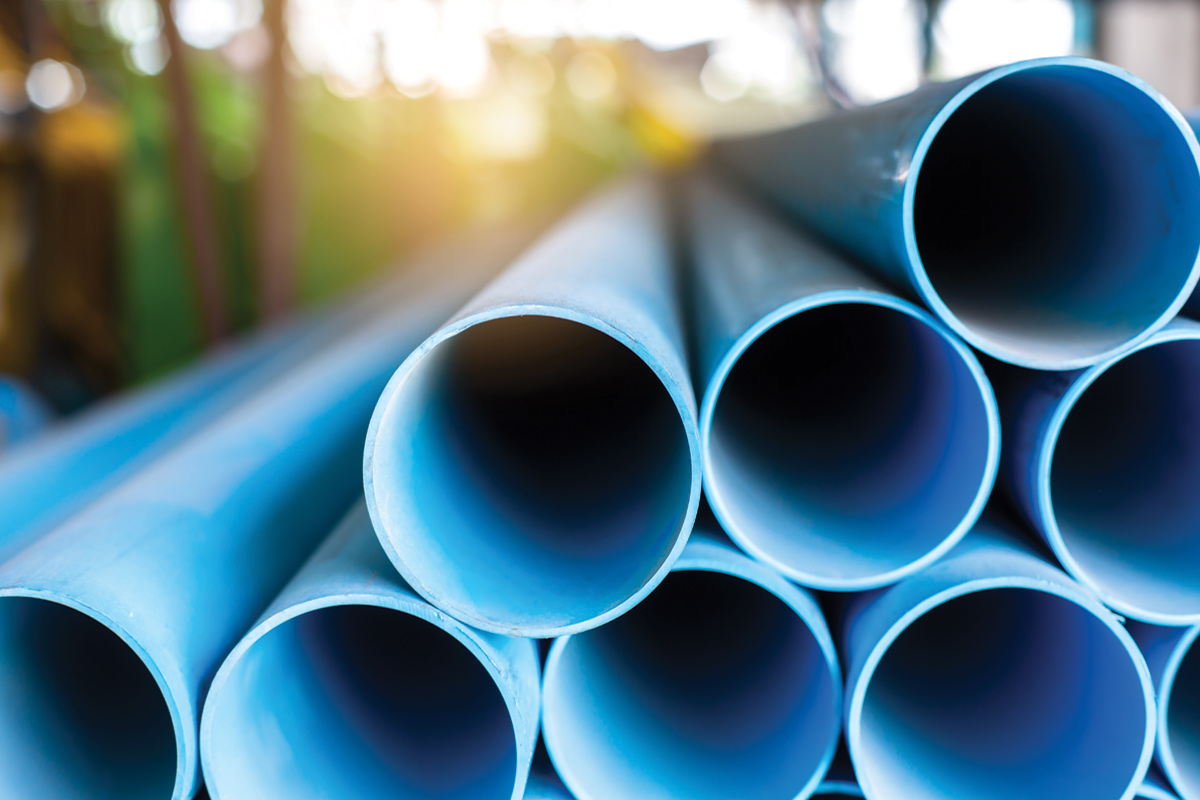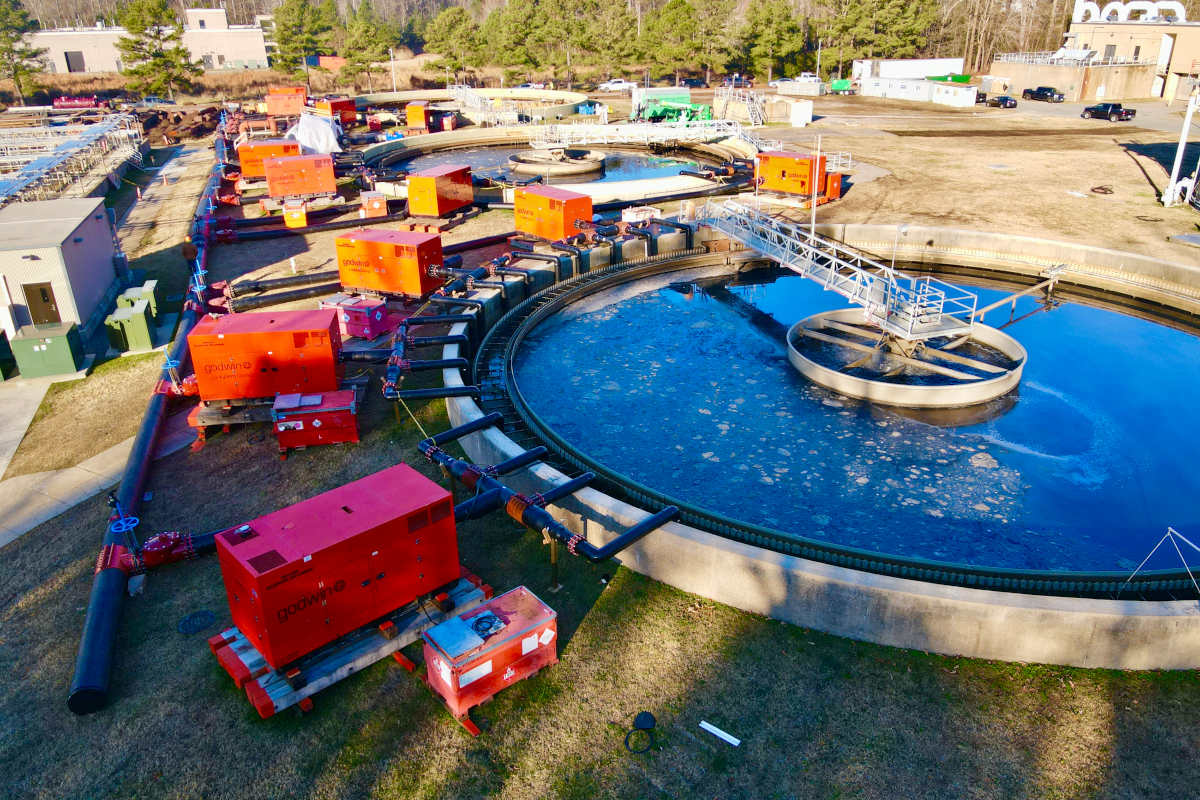
Echologics Continues to Advance Acoustics- Based Condition Assessment, Leak Detection
September 23, 2015
There is an infrastructure deficit. That is a fact that a person can verify every day by turning on the news or opening a newspaper (or powering on your tablet).Proactive sewer and water system owners are looking for ways to get the most “bang for their buck” when making the decision to repair or replace sections of pipe. They also hope to cut critical problems off at the pass.
As asset owners make the shift from a reactive mentality to a proactive one, one of the tools in the toolbox is to use leak detection and condition assessment technologies to narrow down the areas that need the most attention. Toronto-based Echologics, a division of Mueller Co., and its founder Marc Bracken, P.Eng, are early evangelists trying to change the tide.
“We saw a real need in the market to have a high-level, non-invasive, method that allowed utilities to know what condition their infrastructure is in,” Bracken says. “Until we came along, really the only way to do it would be to dig the pipes out of the ground or to put a pig in them, which is expensive and disruptive to the water system.”
Bracken, vice president and general manager of Echologics, formed the company in 2003 and helped commercialize an acoustic leak detection system for PVC pipes as a joint venture with the National Research Council of Canada (NRCC). This was Bracken’s first foray into the world of sewer and water infrastructure and one he jumped into whole-heartedly, growing the company into a global leader in condition assessment and leak detection.

Echologics technicians passively listen to the pipes, analyze the information and associate that with physical properties of the pipe. From there, they can determine condition and if the pipes are leaking or if there are blockages.
Seeds of Growth
So how did Bracken become aware of pipeline leak detection and condition assessment? In the early 2000s, he was working with the NRCC studying ground-borne vibrations as part of his work with Aercoustics, an acoustical engineering firm in which he was a partner. At the same time, Osama Hunaidi, a researcher at the NRCC, was working on a study for the AWWA focusing on why the available leak detection methods did not work on plastic pipes.
“He came up with some really interesting findings and developed a piece of hardware and some software that worked really well on finding leaks on plastic pipes,” Bracken says. “At the time, the NRCC was heavily into commercialization, so they looked for somebody to commercialize this technology.”
With his knowledge of acoustics-based detection systems, Bracken was a logical choice to help bring the hardware and software to market. The commercialization efforts led to what would become the LeakfinderRT system and the basis for Echologics’ growth in the world of acoustics-based detection for water transmission and distribution systems.
“It was actually a pretty smooth transition in retrospect,” Bracken said in reference to his first foray into pipeline leak detection. “Within the first year or two, we were finding leaks that people who had been in the industry for 30 years could not find. It was interesting.”
The company’s first client was Guelph, Ontario, and it sold the LeakfinderRT correlators to St. John’s Newfoundland but Echologics did not start gaining real traction until 2005, Bracken explains. “It took us about three years to fine tune and commercialize the hardware to make it saleable to the community. We developed and built the hardware and software package and conducted full engineering field trials.”
As Echologics and the NRCC worked on the commercialization, it also discovered that the same methods that made leak detection on PVC pipes possible worked well with large diameter pipes, as well. This also led to the next logical progression of condition assessment using the same acoustics technology.
Acoustic Assessments
Bracken likens using acoustics to check a system’s condition to running on a trampoline.
“Imagine running on a trampoline. You can’t run very fast on a trampoline because it is too soft,” Bracken explains. “As water pipes degrade or corrode they get soft as well and, therefore, they are more flexible and the acoustic waves slow down as the pipe degrades. We measure that velocity the same way we measure for the leaks.
It’s not a high-resolution image of what is going on but it is a very high-level image and it is very valuable to our customers. If you look at what some of our customers are doing, they can rank where their pipes are in terms of how much they have corroded and it’s another piece of information to help them make decisions on their water infrastructure replacement program.”
A Global Brand
Though the majority of its work is in North America, Echologics now has offices in Asia, Australia, Netherlands, United Arab Emirates and the United Kingdom.
“North America and the United States are certainly where we have the biggest foothold at the moment,” says Dave Johnston, P.Eng, director of technical services for Echologics. Johnston joined Echologics in 2004. “Canada is up there, as well and recently Singapore has had a very quick acceptance of the new technologies.”
Singapore’s acceptance of the leak detection and condition assessment technologies might surprise some, but not Bracken. Like technology companies in other industries, as Echologics grew, it targeted early technology adopters as some of its first customers. In the United States that meant working with the Las Vegas Valley Water District and the Washington Suburban Sanitary Commission. In Singapore that meant working with the public utilities board (PUB) to assess leakage.
“Singapore doesn’t actually have its own water, they either import it from Malaysia or they recycle it and they are every proactive with maintaining their water infrastructure,” Bracken says.
Non-invasive Tech
Unlike pigging a line or cutting a section of pipe out to check its condition, both of which require disrupting service, by using acoustics, Echologics offers a non-invasive and non-intrusive method for checking a system’s condition. This fact sets the Echologics technologies apart from many of its competitors.
By placing sensors on either fire hydrants or valves along a section and then adding noise to the pipe, Echologics technicians can listen and analyze the vibrations to find leaks or to measure pipe wall thickness. Echologics boils the information down in a report, as well as a GIS overlay that a client can input into an existing asset management system.
“Prior to this technology, the only way to determine if a pipe needed to be replaced was to dig it up and take a look at it. Digging up and cutting out a piece of pipe is very intrusive. You need to put in traffic control, notify customers, dig a hole, shut down the main, cut out a sample, then you need to fix it and put everything back in service,” Johnston says. “After you get the piece of main out, you may learn that it is in good condition anyways and it does not need to be replaced. You ended up cutting the piece out for no reason.”
The Echologics condition assessment technology, branded ePulse, offers Echologics customers both condition assessment and leak detection in one package.
At this time, ePulse offers survey-level data on large and small diameter pipe and most pipe materials. ePulse does not work on PVC at this point, but Bracken says that the company is actively researching that avenue.
Echologics recently opened its Innovation Site in Walkerton, Ontario, check out our story here.
Though acceptance of condition assessment and leak detection has grown greatly since 2003, Johnston sees the tide quickly turning as utility owners see the benefits that real world information has in making better-informed and more financially prudent decisions about the systems.
“Budgets are becoming tighter and asset managers have to get smarter with the way they are making decisions and the way they manage the system. The technologies are becoming more easily deployed and attainable,” Johnston says. “The asset managers are figuring out how they can use this for their advantage and they are starting to see real financial benefits to using these technologies.”
Growing the Toolbox
This is one of the reasons New Jersey American Water turned to Echologics to assess a newer 16-in. water main on the Barrier Islands. Donald Shields, vice president and director of engineering for New Jersey American Water, explains that the newer pipe had already started leaking and the utility wanted to find out why. Instead of looking solely for leaks, Echologics offered a better value proposition by conducting a condition assessment, as well.
“It was a nice easy way to get in there and see what the condition of the pipe was even though it was relatively new,” Shields says. This project led to Echologics surveying approximately 20 miles of pipe for New Jersey American Water and plays into the utility’s decision-making process, especially on the clean and line projects that it traditionally completed using a desktop analysis.
When working on the clean and line projects, Shields says, the utility looks to see if the pipe is structurally sound enough for a cement mortar lining or if a structural or semi-structural liner is required. The Echologics systems enable New Jersey American Water to make the most prudent financial decisions.
“In certain instances, we need more detail but with Echologics, we can look at five miles of pipe [to assess wall thickness] vs. one mile with more invasive testing,” Shields says. “Before we make a decision to replace a whole five-mile section of large diameter pipe at roughly $1 million a mile, we can get a condition assessment that focuses on the sections that need to be fixed, for a fraction of the replacement cost.”
At this time, all of the Echologics projects in New Jersey have been snapshot surveys but Shields says they are in talks with the company for deployment of the EchoShore 24/7 monitoring solution, similar to what other American Water properties are using.
As with any technology-driven company, one of the cornerstones of Echologics is research and development and both Bracken and Johnston see exciting opportunities on the horizon.
The most recent commercialized advancement is the EchoShore technology, which takes the company into the world of the industrial Internet of Things (IoT). Both Bracken and Johnston see the future in smart water systems that allow a utility owner to monitor both inside and outside of the fence.
This is where the Echologics EchoShore systems come into play. The leak detection system turns fire hydrants into smart hubs that allow for round-the-clock monitoring for leaks on transmission (EchoShore TX) or distribution mains (EchoShore DX).
“If you look at the history of monitoring and SCADA in the water industry, it’s all inside the fence. You can get a lot of data inside your water plant fence,” Bracken says. “Once you pump that out into the system, most utilities, with the exception of a monitoring station here and there, they really don’t know what is going on.”
Echologics or the utility would complete an initial assessment and then continually monitor the condition of the pipe, providing economic value through reducing water loss and by finding leaks before a critical incident. As the Echologics tech and IoT evolve, the technology will become less expensive and will become available to all utilities because it no longer is cost-prohibitive.
“The business case for condition assessment and leak detection is so strong that it will continue to evolve, and we are just at the beginning,” Bracken says. “I do believe smart water systems will take off and leak detection can be one of the leads to that because there is such a strong business case for finding leaks early. It’s not just in finding leaks; it’s in avoiding the collateral damage to infrastructure.”
Mike Kezdi is assistant editor for Trenchless Technology.
Tags: Echologics, Mueller Water Products




